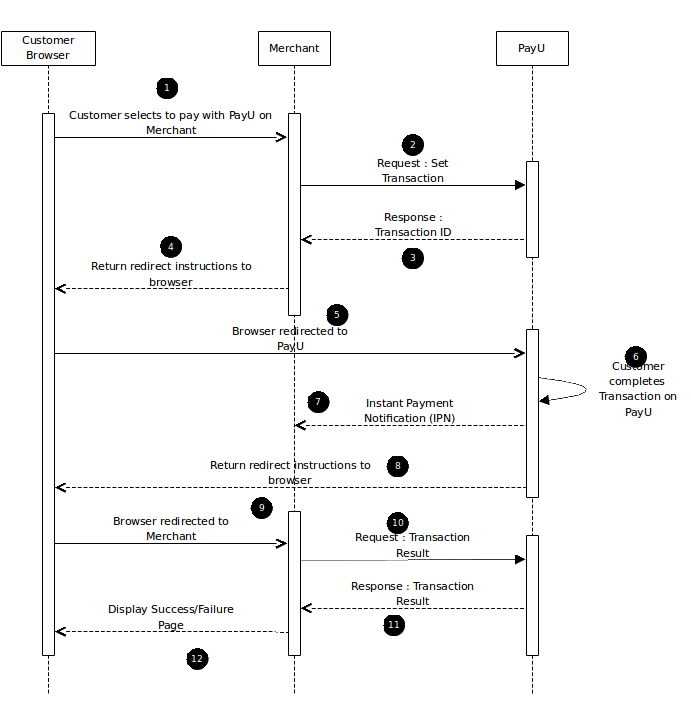A typical sequence might look like this.
1. Customer selects to pay with PayU on merchant website.
Merchant can integrate a PayU payment button which will initiate transaction with PayU.
2. Merchant starts the PayU process with a setTransaction request.
This is the first server-side web service call made by merchant webserver to PayU in order to set up the transaction on PayU.
3. PayU response: Transaction ID.
PayU will respond to a setTransaction request with a PayUReference which can then be used to redirect the customer to make a payment.
4. Merchant returns redirect instructions to customer browser.
The merchant has to return the redirect instructions to the browser in order to redirect the customer to PayU.
5. Customer browser redirected to PayU.
An HTTPS GET will be used to redirect the customer to PayU with the PayUReference. PayU will identify the transaction using the PayUReference and pick up the previous set of values passed in the setTransaction call.
6. Customer completes transaction on PayU.
The customer will proceed to complete the transaction on PayU by using one of the payment methods provided.
7. Instant Payment Notification (IPN)
If the notificationURL is populated, an instant payment notification will be sent to the merchant to immediately inform them of the result of the transaction.
8. PayU returns redirect instructions to the customer's browser.
After the customer has confirmed their payment, PayU will return redirect instructions to the customer's browser.
9. PayU redirects customer browser back to merchant website.
An HTTPS GET will redirect the customer back to the merchant's website.
10. Merchant requests Transaction Result (getTransaction).
The merchant issues a server-side web service call to PayU to retrieve the transaction result and determine transaction outcome.
11. PayU response: Transaction Result
PayU will return all payment transaction information in the response. Success or failure and other details.
12. Merchant Displays Success/Failure page on website
The merchant should now redirect the user to the relevant success/failure/invoice page on their own site.
